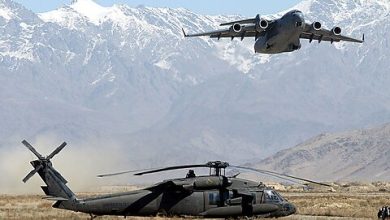U.S. Food Aid for Poor Countries

Chris Edwards and Krit Chanwong
Congress is scheduled to reauthorize farm programs this fall, which provides an opportunity to cut spending and reduce budget deficits. This Cato study discusses reasons to cut cash payments to crop farmers, but there are other dubious farm programs in addition to the direct handouts.
The U.S. Department of Agriculture (USDA) spends more than $2 billion a year on three programs that provide food aid to poor countries, which aim to alleviate hunger and support development. The programs have noble goals, but they suffer from serious practical flaws.
Food Aid Programs
The table summarizes three foreign food aid programs. The programs provide emergency aid in crisis situations and nonemergency aid aimed at long‐term development. They rely on nongovernment and international organizations for implementation.
Most of the aid involves shipping U.S. food abroad and distributing it to recipients. But some of the aid involves buying food abroad near the area where it will be delivered. And some of the aid involves shipping U.S. food abroad and reselling it in foreign markets to raise cash for programs, which is called monetization.
Here are some program details:
Food for Peace. Enacted in 1954, this program was aimed at feeding poor nations while disposing of excess U.S. crop production stimulated by federal support programs. Food for Peace (also called P.L. 480) is administered by the U.S. Agency for International Development (USAID) but is funded in USDA’s budget and relies on the USDA to purchase the food. About four‐fifths of the aid is for emergencies and one‐fifth for non‐emergency programs.
Food for Progress. Enacted in 1985, this program funds development activities, including helping countries improve their infrastructure and agriculture. The program uses monetization—shipping U.S. food abroad and selling it in foreign markets to raise money. It is run by the USDA.
McGovern‐Dole. Enacted in 2002, this program donates food for school‐age children and other groups in poor countries, while also helping countries expand their government food programs. Up to 10 percent of funding can be spent on purchasing food in foreign markets, which is called “local and regional procurement.” The program is run by the USDA.
The U.S. foods purchased for these programs include wheat, sorghum, pulses, rice, corn, soybeans, and vegetable oil. Africa is the largest recipient region.
The Congressional Research Service (CRS) says, “U.S. reliance on in‐kind [food] aid is controversial due to its potential to disrupt international and local markets and because it typically costs more than market‐based assistance.” Also, the USDA’s foreign aid activities overlap those of the main federal aid agency, USAID.
Undercutting Local Farmers
When the United States gives free grains and other foods to poor countries, it risks undercutting local farmers abroad, and thus undermining the ability of poor countries to feed themselves. Foreign aid experts have warned about this problem, and of the general inefficiency of food aid, for decades, but U.S. agricultural and shipping interests favor donating U.S. food. The CRS notes that other donor countries have mainly dropped in‐kind food aid: “Many other major donors—such as Canada, the United Kingdom, and the European Union—have converted primarily to cash‐based assistance.”
In recent years, McGovern‐Dole has given thousands of metric tons of rice to Laos. But Laos is a substantial producer of rice—indeed a net exporter—and the U.S. donation was small compared to the total Laos production. Using U.S. taxpayer funds to ship rice across the ocean to potentially displace some of Laos’ production does not make economic sense.
A 2017 study examined 118 countries over 45 years that received U.S. food aid to see if the aid affected local food production. It found that “doubling U.S. food aid reduces cereal‐grain production by 1.5%” in recipient countries, and that the “disincentive effect of food aid on production is particularly significant for sub‐Saharan African countries, low‐income countries, and regular recipients of U.S. food aid.”
The USDA and USAID are supposed to analyze whether their food aid projects will distort local economies, but the GAO found that the agencies “did not consistently document that U.S. commodities would not negatively affect recipient countries’ production or markets.”
It is counterproductive to provide foreign aid in ways that interfere with poor countries’ efforts to achieve market‐based growth. Thus, providing free commodities that may undermine farmers in recipient countries is not a good aid strategy.
Slow and Expensive Delivery
Even in cases where U.S. food aid may be helpful, such as some crises, the long time needed for shipping reduces the usefulness. U.S. food aid shipments typically take four to six months to reach their destinations abroad. USAID pre‐positions some food abroad for emergencies, but that approach is expensive and subject to problems such as theft, infestation, and spoilage.
A better approach is usually local and regional procurement (LRP) in markets near to where food is needed. But only a small share of U.S. food aid uses this approach, apparently because of the influence of U.S. farm and shipping lobbies.
LRP is less expensive than shipping U.S. food, and it can reach destinations months earlier. One study found that compared to shipping U.S. food, “Procuring food locally or distributing cash or vouchers results in a time savings of nearly 14 weeks, a 62 percent gain.” The study found that procuring grains and pulses locally was far less expensive than shipping from the United States.
The GAO found that U.S.-sourced food aid typically costs 25 percent more than LRP. And the auditors have noted, “Buying food close to where hungry people live has advantages over buying food in the United States and shipping it overseas: It can be much more cost effective and allow for more timely assistance .… This practice can also have the added benefit of supporting the local or regional agricultural sector, rather than undercutting it with imported food.”
The George W. Bush and Barack Obama administrations favored expanding the LRP approach instead of shipping U.S. food. The Donald Trump administration proposed repealing the Food for Peace program noting, “Procuring food near crises can save up to two months or more on delivery time and can significantly reduce the costs of food aid.”
Foreign aid experts generally argue for flexibility in aid responses and against tying aid to U.S. food production, which is a relic of farm support programs from decades past. Repealing the USDA’s foreign aid activities and allowing USAID to use more efficient aid approaches—such as LRP—would be a step forward.
Cargo Preference
The Cargo Preference Act requires that half the tonnage of government‐financed cargo must ship on U.S.-flagged vessels. Food for Peace, Food for Progress, and McGovern‐Dole must abide by these rules. U.S.-flagged vessels have substantially higher costs than vessels flagged abroad, so the rules raise the costs of U.S. food aid programs.
A GAO study found that cargo preference rules increase shipping costs of food aid by an average 31 percent. A 2021 study by the American Enterprise Institute found that “cargo preference requirements increase real ocean transportation costs per metric ton by 68 percent for packaged goods shipments and 101 percent for bulk goods shipments.”
Interestingly, about half of the U.S.-flagged ships available for food aid programs are owned by foreign parent companies. Colin Grabow discusses other flaws in the cargo preference rules here. The bottom line is that even in situations when donating U.S. food to poor countries makes sense, the government is doing it in an inefficient manner.
Monetization
Under the Food for Progress program, the “USDA donates U.S. agricultural commodities to international organizations, NGOs, foreign governments, or private entities, which can then distribute the commodities to beneficiaries or monetize the commodities by selling them locally to raise funds for development projects.”
So rather than, say, paying directly for an education program in a poor country, monetization involves shipping U.S. food abroad and selling it to raise cash for the program. The main U.S. farm products shipped in the program are soybeans, wheat, and rice.
The monetization process loses money for taxpayers and can undermine foreign farmers. A GAO study on food aid monetization was titled, “Funding Development Projects through the Purchase, Shipment, and Sale of U.S. Commodities Is Inefficient and Can Cause Adverse Market Impacts.” The GAO found that monetization is “inefficient and can actually hurt the domestic agricultural markets in developing countries that are already challenged in meeting the food needs of their people.”
Monetization is a wasteful and roundabout method of funding aid programs, and it should be repealed.
Overlap with USAID
In 2023, the federal government will spend more than $17 billion on USAID, the Millennium Challenge Corporation, multilateral aid institutions, and other non‐security international aid agencies. Funding other foreign aid on top of that through domestic agencies, such as the USDA, creates wasteful duplication with the international‐focused agencies.
The GAO has examined the bureaucratic overlap between the USDA and USAID. The auditors found, for example, “Both USAID and USDA were implementing nonemergency food aid programs in Guatemala and Uganda in fiscal year 2011, and we found that these programs shared common geographic focus areas, activities, and implementing partners.”
There are so many agencies now involved in foreign food aid and hunger issues that the government created a superstructure to coordinate the sprawl called the Government Global Food Security Strategy (GFSS). The GAO reported last year that the USAID “leads the global coordination of efforts conducted by itself and 11 other U.S. agencies—collectively known as the GFSS Interagency—to implement the strategy. According to the GFSS, increased interagency engagement is intended to build effective coordination.”
But we suspect that coordination would be better and taxpayer costs lower if aid was consolidated in the USAID and not spread across 11 other agencies.
Conclusions
Congress should end the USDA’s involvement in foreign aid. The Trump administration pointed to the flaws in these activities in proposing to repeal Food for Peace, Food for Progress, and McGovern‐Dole. That would save taxpayer money, reduce duplication, and eliminate the harmful side effects that food aid projects can create.
More broadly, some analysts question the efficacy of government foreign aid in general. Ian Vasquez argues that providing foreign aid to countries with poor policy environments does not boost development. He points to the strong relationship between economic freedom and growth. In 2019, the average per capita income of the least free quintile of countries in the world was $5,911, which compared to $50,619 for the most free quintile.
Rather than relying on foreign aid, countries struggling with hunger and low incomes should pursue institutional reforms such as strengthening private property, opening markets, adopting stable money, and removing barriers to entrepreneurship including farming. The good news is that as more countries have adopted market institutions in recent decades, global incomes have risen and hunger has plunged.
More on farm subsidies here. More on global hunger issues at Human Progress here.





